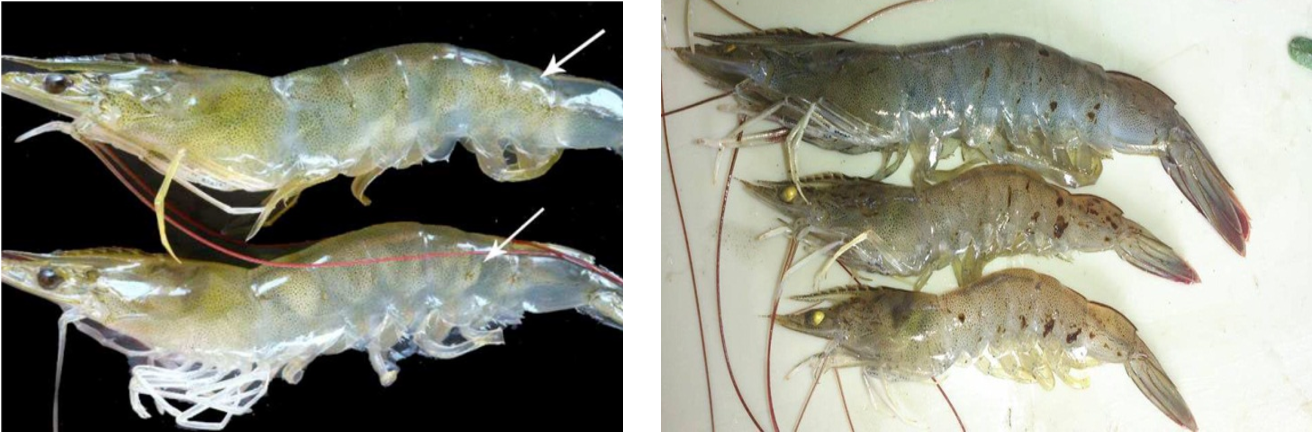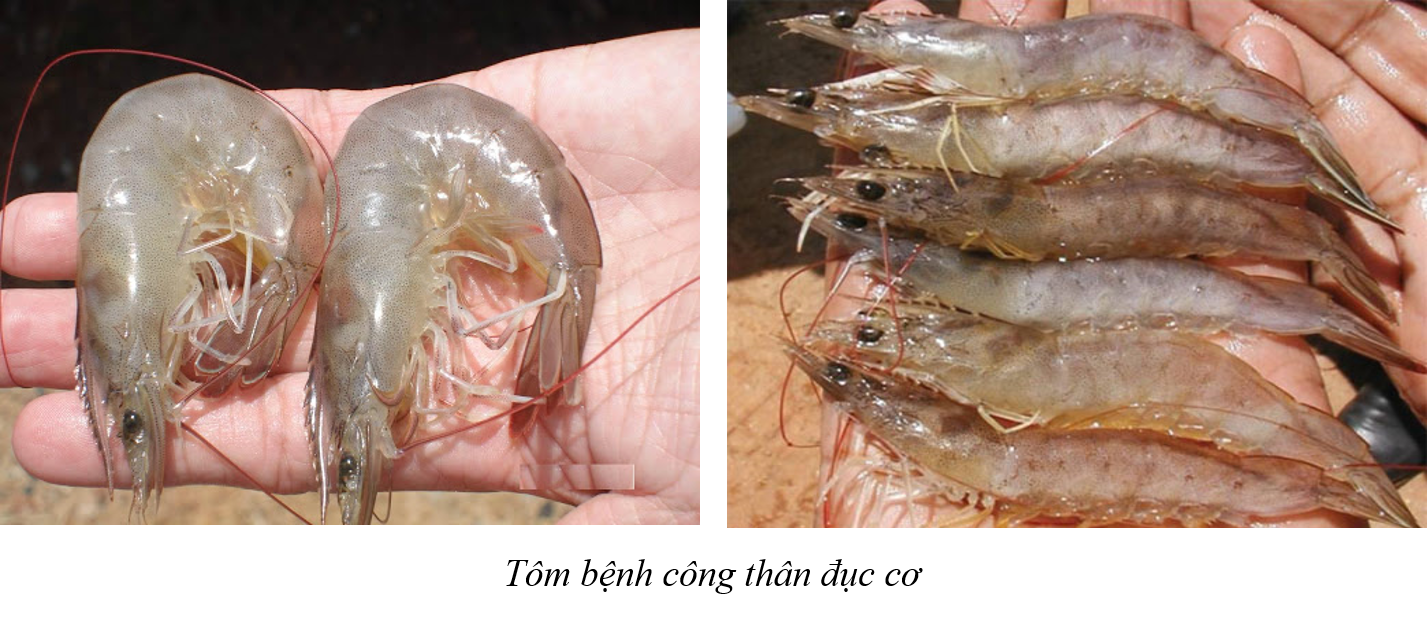1. Symptoms
- Shrimp flesh is milky white.
- The body shrinks into the shape of C.
- Shrimp cannot straighten themselves.
This phenomenon is often seen when checking fishing nets or shrimp jumping out of the surface.
Curved body and opaque muscle diseases
2. Causes
- Alkalinity is lower than 100 mg CaCO3 per liter.
- Calcium and Magnesium content is lower than 200 mg/L and 600 mg/L, respectively.
- Micro – macro nutrient deficiency causes minerals imbalance in the body.
- High organic matter content reduces mineral absorption.
- Alum content is higher than 1 mg/L reduces mineral absorption.
- Shrimp are stressed by the environment. After heavy rain or hot weather, it changes temperature and salinity. In addition, it also stratifies water and increases toxic gas content.
- Transferring shrimp when weak health and high temperature, or due to the difference in environmental factors between culture and nursery ponds.
- Bacterial or viral infection causes infectious myonecrosis (IMNV).
- The pond is poor in nutrients due to the presence of snails and bivalves.
- High stocking density and low salinity (under 5 ppt)

Curved body and opaque muscle diseases by viruses and bacteria infection
3. Consequences
– In case of mild shrimp disease:
Shrimp molt with soft shell or incompletely, reduce eating and opaque muscle for a long time. It leads to 10-20% shrimp mortality and an unequal growth rate.
– In case of serious shrimp disease
Shrimp opaque muscles, curl body into a shape of C, and can’t swim. It leads to mass mortality of 50-70% of shrimp.
4. Preventive measures
- Increasing alkalinity by using CaCO3 with a dose of 10kg/1000m3 and Bicarbonate with 2kg/1000m3, periodically 2 days per time. The ideal alkalinity is from 140-180 mg CaCO3 per liter.
- Supplementing calcium and magnesium by using Dolomite lime with a dose of 10kg/1000m3 or adding minerals containing calcium and magnesium, periodically 2 days per time. The ideal content of calcium is from 400-450 mg/L and magnesium from 1.300-1,600 mg/L.
- Adding micro-macro minerals to the pond to balance the minerals in the body periodically 3 days per time.
- Reducing organic matter content by using probiotics periodically 7 days per time, and Zeolite with 10kg/1000m3 periodically 3 days per time. In addition, siphoning the pond bottom or using Poly Aluminium Chloride (PAC) as needed.
- Reducing alum in ponds by using EDTA with a dose of 2kg/1000m3 periodically 5 days per time, and 1kg/1000m3 after heavy rains.
- After prolonged rain or hot weather, increasing paddle wheels to create oxygen continuously and avoid water stratification. Besides, supplementing lime, minerals, and yucca to absorb toxic gas
- Using BKC 80% with a dose of 1 liter/1000m3 when shrimp is infected.
- Killing snails, bivalves, and other animals that compete for alkalinity with farmed shrimp at the beginning of the crop.
- The stocking density should be appropriate. The salinity is greater than 5 ppt.
* Disease can appear after 10 days of culture and significantly affect the survival rate. Therefore, periodically checking the farmed shrimp’s health to take timely preventive measures.
By Master Huynh Duy Phong – Binh Minh Aquaculture Development Co., Ltd

 Tiếng Việt
Tiếng Việt 中文 (中国)
中文 (中国)
